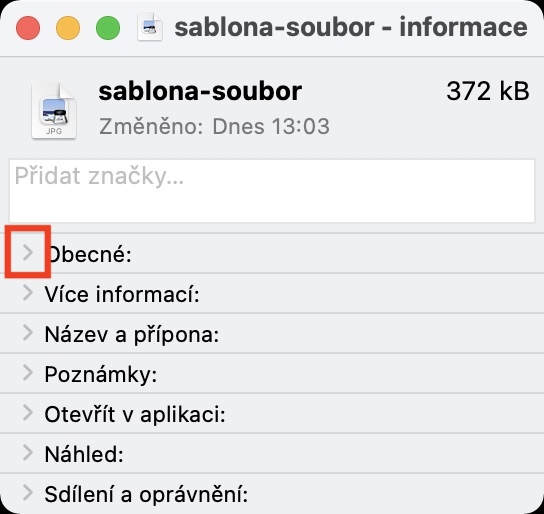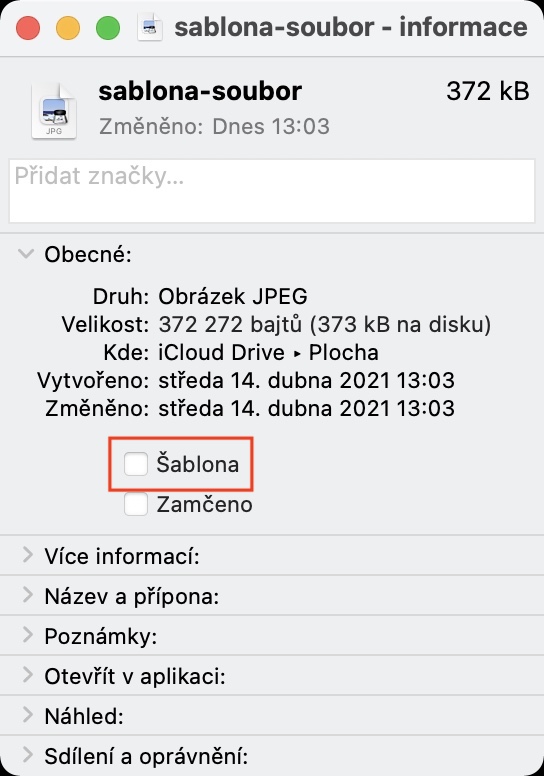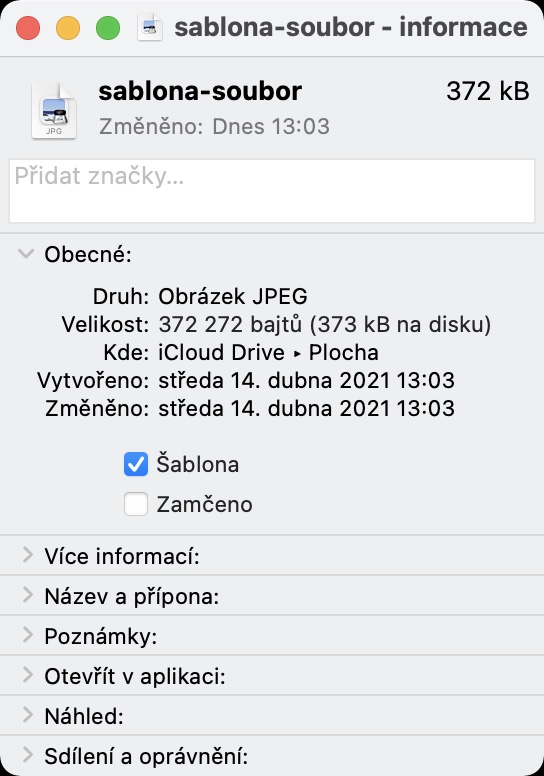macOS includes countless different functions that are designed to make the use of this operating system more pleasant. One of these functions that you will use when working with files includes the option to set the file as a template. This is useful if you constantly use a file as a template and do not want to lose it after editing. If you use the template, the file serving as a template will never be overwritten after editing – instead, a copy of it will be automatically created in which you will then work.
It could be interest you

How to set a file as a template on Mac so it doesn't change
If you want to set a specific file to behave as a template within macOS, it is not complicated. Just follow this guide:
- First, you need to be yourself file found within the Finder.
- Once you do, tap on it right click whether with two fingers.
- This will bring up a drop-down menu where you can click on the top part Information.
- Another window will open where you can view information about the file.
- Now make sure you have help darts open category In general.
- Here it is enough that you ticked box next to the option Template.
A template can be created from the selected file in the above-mentioned way. To better understand the function, imagine that you have created a table in Numbers that you have to fill in every day. This table is empty and serves just as a template into which you enter data every day. So you have to make a copy of the file itself every day, and if you forget about this action, then you have to delete the data from the edited file so that the file can be used as a template again. If you follow the above procedure, you don't have to bother with constant duplication - the system will do everything for you and you don't have to worry about overwriting the original file.
 Flying around the world with Apple
Flying around the world with Apple 




Hello, the template works, but only if I open the file from the iCloud Drive folder or simply from the folder where the folder is stored. If I'm used to accessing the files from the app, it doesn't work. When I open Numbers and select the desired file, it behaves normally and not as a template. As soon as I open the same file via Finder from the folder, it behaves like a template. Is it possible to set it somewhere so that the file behaves like a template no matter where I open it from? Thanks for the reply